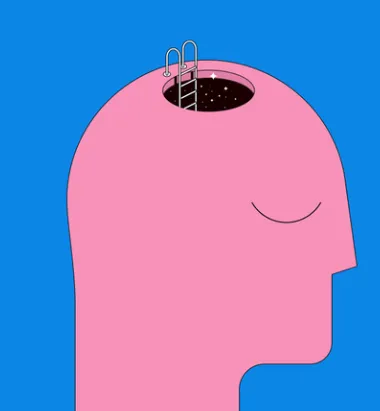Migraines Unveiled: A Deep Dive into the Nervous System’s Silent Struggle

Migraines are more than just a severe headache; they are a complex neurological condition that affects millions of people worldwide. Often misunderstood as a typical headache, migraines involve intense, debilitating symptoms that can disrupt daily life. This article explores the neurological disorder in greater detail, examining the causes, symptoms, treatment options, and resources available for individuals suffering from migraines.
What Are Migraines?
A migraine is a neurological condition characterized by intense, throbbing pain, often on one side of the head. It’s frequently accompanied by other symptoms such as nausea, vomiting, sensitivity to light, sound, or smell, and sometimes even visual disturbances known as "auras." While the precise cause of migraines is not entirely understood, they are believed to be triggered by a combination of genetic and environmental factors that affect the brain and nervous system.
The Neurological Mechanism Behind Migraines
At the heart of migraines lies an abnormal brain function. Researchers believe that a combination of genetic predisposition and environmental triggers leads to changes in the brainstem and its interactions with the trigeminal nerve, which is involved in pain sensation. This malfunction leads to the release of chemicals that cause inflammation and dilation of blood vessels in the brain, leading to the severe pain associated with migraines.
Other potential triggers include stress, hormonal changes, weather fluctuations, certain foods, lack of sleep, or even strong sensory stimuli like bright lights or loud noises. Understanding these triggers can help individuals manage their condition more effectively.
Symptoms of Migraines
The symptoms of migraines vary from person to person but generally include:
- Throbbing, intense pain typically on one side of the head.
- Sensitivity to light, sound, or smell.
- Nausea and vomiting.
- Aura: Visual disturbances such as flashing lights, zigzag lines, or temporary vision loss that occur before or during the headache phase.
- Dizziness or lightheadedness.
Migraine attacks can last anywhere from a few hours to several days, and the frequency of attacks varies, with some individuals experiencing them weekly while others may go months without one.
Treatment and Management
Although there is no cure for migraines, there are several ways to manage the symptoms and reduce the frequency of attacks. Common treatments include:
- Medications: Over-the-counter pain relievers, prescription medications such as triptans, or preventive treatments like beta-blockers or anticonvulsants.
- Lifestyle changes: Keeping a regular sleep schedule, staying hydrated, avoiding trigger foods, and managing stress through relaxation techniques like yoga or meditation.
- Alternative therapies: Some people find relief from acupuncture, chiropractic care, or biofeedback techniques.
While these treatments can significantly reduce the impact of migraines, it’s crucial to consult with a healthcare provider to determine the best treatment plan tailored to individual needs.
Where to Find Support and Resources
Several reputable organizations and companies offer support, education, and treatment options for people suffering from migraines. Here are some resources to consider:
1. American Migraine Foundation: A leading organization that provides comprehensive migraine education and resources. [https://americanmigrainefoundation.org](https://americanmigrainefoundation.org)
2. Migraine Research Foundation: Dedicated to funding migraine research and providing support. [https://migraineresearchfoundation.org](https://migraineresearchfoundation.org)
3. National Headache Foundation: Offers information on headache disorders, including migraines. [https://headaches.org](https://headaches.org)
4. WebMD - Migraines: Provides medical advice and treatment options for migraines. [https://www.webmd.com/migraines-headaches](https://www.webmd.com/migraines-headaches)
5. Migraine.com: A comprehensive site offering articles, community forums, and expert advice. [https://www.migraine.com](https://www.migraine.com)
6. Healthline - Migraines: Offers health tips, treatment advice, and coping strategies for migraines. [https://www.healthline.com/health/migraine](https://www.healthline.com/health/migraine)
7. The Mayo Clinic - Migraine: A trusted medical source for understanding and treating migraines. [https://www.mayoclinic.org/diseases-conditions/migraine-headache](https://www.mayoclinic.org/diseases-conditions/migraine-headache)
8. Cure Headaches: Offers guidance on finding the right treatments for headache sufferers. [https://www.cureheadaches.com](https://www.cureheadaches.com)
9. The Migraine Trust: A UK-based charity offering support and funding research. [https://www.migraine.org.uk](https://www.migraine.org.uk)
10. MedlinePlus - Migraine: Provides an overview of migraines, symptoms, and treatment options. [https://medlineplus.gov/migraine.html](https://medlineplus.gov/migraine.html)
HTML Table for Comparison of Migraine Treatment Methods
<table style="border: 1px solid #d3d3d3; width: 100%; background-color: #f9f9f9;">
<thead style="background-color: #e6f7ff;">
<tr>
<th>Treatment Method</th>
<th>Description</th>
<th>Effectiveness</th>
<th>Side Effects</th>
</tr>
</thead>
<tbody>
<tr>
<td>Medications</td>
<td>Prescription medications like triptans or OTC pain relievers for acute relief</td>
<td>Effective for many, especially when taken early in the attack</td>
<td>Drowsiness, dizziness, or stomach upset</td>
</tr>
<tr>
<td>Preventive Medications</td>
<td>Beta-blockers, anticonvulsants, and antidepressants to reduce frequency</td>
<td>Effective for those with frequent migraines</td>
<td>Weight gain, fatigue, or mood changes</td>
</tr>
<tr>
<td>Lifestyle Changes</td>
<td>Regular sleep schedule, hydration, avoiding triggers</td>
<td>Can significantly reduce the number of attacks</td>
<td>No side effects if followed consistently</td>
</tr>
<tr>
<td>Alternative Therapies</td>
<td>Acupuncture, chiropractic care, and biofeedback</td>
<td>Effective for some, though results can vary</td>
<td>Minimal side effects, but not universally effective</td>
</tr>
</tbody>
</table>






